Is a Portable Power Station Better Than a Generator?
ZacharyWilliamQuick Answer: For most people and everyday use, portable power stations are a better option than traditional gas-powered generators. They're safer, quieter, easier to use, and environmentally friendly. But generators still have their place — especially for long-term, high-wattage applications.

Table of Contents
- Power Station vs. Generator: Quick Comparison
- When Is a Portable Power Station Better?
- When Is a Generator Still Useful?
- Key Differences Explained
- Cost and Long-Term Value
- Final Verdict: Which One Should You Choose?
- UDPOWER Product Recommendation
- FAQs
Power Station vs. Generator: Quick Comparison
Here’s a side-by-side look at the major differences:
| Feature | Portable Power Station | Gas Generator |
|---|---|---|
| Power Source | Rechargeable Battery | Gasoline, Propane, Diesel |
| Noise Level | <30dB (Whisper Quiet) | 60–90dB (Loud) |
| Indoor Use | Yes, Safe | No, Carbon Monoxide Risk |
| Maintenance | Minimal | Frequent (Oil, Filter, Fuel) |
| Eco-Friendly | Yes (Solar Compatible) | No (Emits Fumes) |
| Portability | Lightweight, Compact | Heavy, Bulky |
| Ideal For | Camping, CPAP, Laptops | Whole-Home, Power Tools |
When Is a Portable Power Station Better?
Portable power stations shine in scenarios where convenience, silence, and safety are priorities. For example, if you're camping in a national park, running a CPAP machine overnight, or working remotely with laptops and camera gear, a battery-powered station offers clean, quiet energy without fumes or noise.
They're also ideal for apartments and condos, where running a gas generator is either forbidden or dangerous. Since most modern stations offer solar input, you can recharge them off-grid without ever needing fuel.
When Is a Generator Still Useful?
Generators are still useful for high-power, high-demand situations. If you live in an area prone to week-long blackouts or need to run appliances like sump pumps, central A/C units, or electric ranges, a generator's continuous fuel-based operation might make more sense.
Construction sites, rural homesteads, or disaster recovery setups often require the high-wattage and runtime that generators can deliver. Just be prepared for the noise, fuel costs, and regular maintenance.
Key Differences Explained
Power Output and Appliance Compatibility
Most portable power stations are rated between 300W and 2000W, enough to power phones, laptops, small refrigerators, CPAPs, TVs, or microwaves. However, if you need to run high-powered tools or large appliances, generators typically offer more capacity — but with significant tradeoffs in convenience and safety.
Noise and Safety
Generators can exceed 85dB — the volume of a lawnmower — and must be run outdoors due to carbon monoxide. Power stations are whisper-quiet (as low as 25dB) and safe for bedrooms or tents. If you value silence or have kids, pets, or elderly family members, a power station is a no-brainer.
Fuel vs Battery Charging
Generators require fuel on hand and can’t be used while refueling. Power stations can be recharged via AC wall outlet, car charger, or solar panel — even while in use. That makes them much more flexible for long road trips or emergency preparedness.
Maintenance and Reliability
Generators need regular oil changes, spark plug inspections, and filter cleaning. Portable power stations? Just keep it charged and stored properly. Some, like the UDPOWER S1200, can hold a charge for up to a year and cycle over 4000 times.
Portability and Ease of Use
Portable power stations weigh less than 30 lbs and are compact enough to carry in one hand. Generators are often bulky, heavy, and require gas canisters and pull cords. If you're traveling solo or don’t want the hassle, a power station is far more user-friendly.
Cost and Long-Term Value
Generators can appear cheaper upfront, especially for higher-wattage models. But once you factor in the ongoing cost of fuel, oil, and maintenance — plus potential health risks or housing restrictions — the long-term value often swings in favor of power stations.
Plus, solar charging can eliminate ongoing costs completely. A one-time investment in a solar panel setup + power station like the UDPOWER S1200 can provide free, sustainable energy for years.
Final Verdict: Which One Should You Choose?
If you need reliable, quiet, indoor-safe energy for small to medium power needs — a portable power station is the better choice. It's ideal for modern lifestyles, eco-conscious living, and hassle-free usage. Unless you’re powering a whole house or remote job site, the benefits of portable battery power outweigh the drawbacks.
Recommended Power Station: UDPOWER S1200
- Capacity: 1190Wh with 1800W rated output
- Battery: LiFePO4 with 4000+ charge cycles
- Ports: 15 outputs including USB-A, USB-C, AC, Car port, wireless charger
- UPS Feature: <10ms switch time
- Noise Level: <25dB
Learn more about the UDPOWER S1200 here →

FAQs: Portable Power Stations vs Generators
-
Can a portable power station replace a generator?
In most light- to medium-use cases, yes. But for high-wattage appliances or multi-day outages, a generator may still be needed. -
Can you run a refrigerator with a portable power station?
Yes. Most mini-fridges and even standard fridges (under 150W average) can run for 4–10 hours on a 1000Wh+ station. -
Are portable power stations safe indoors?
Absolutely. No fuel, no fumes, no fire hazard. Perfect for bedrooms, RVs, and enclosed spaces. -
Can a generator charge a power station?
Yes, if your power station has an AC input, you can recharge it via generator in emergencies. -
How long does it take to charge a portable power station?
Depending on model and input method: 1.5–8 hours via AC, 4–10 hours via solar panel (100–200W). -
Can I bring a portable power station on an airplane?
No. Most exceed the FAA limit of 100Wh for lithium batteries. Check airline regulations. -
What’s the lifespan of a portable power station?
With LiFePO4 batteries (like UDPOWER S1200), you can expect 3000–4000 cycles — over 10 years of use. -
Can a generator damage sensitive electronics?
Yes. Inverters on power stations provide cleaner, more stable electricity, which is safer for phones, laptops, and cameras. -
Can I use both together?
Yes. You can use a generator to charge your power station when the sun or wall power isn’t available. -
What’s the best option for RVs?
Portable power stations are best for silent nights and quick charging. Pair with solar for true off-grid living.
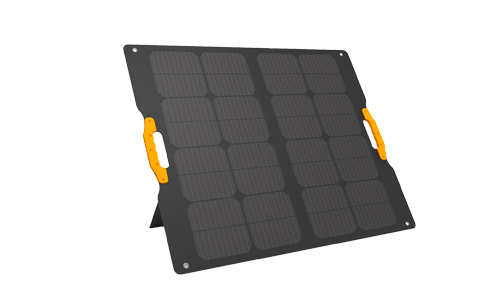
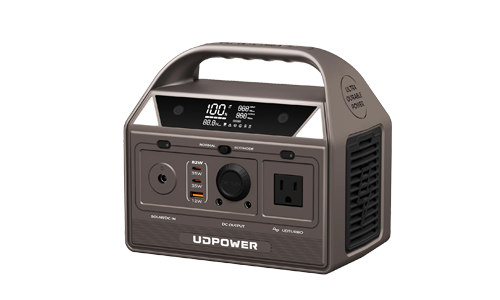
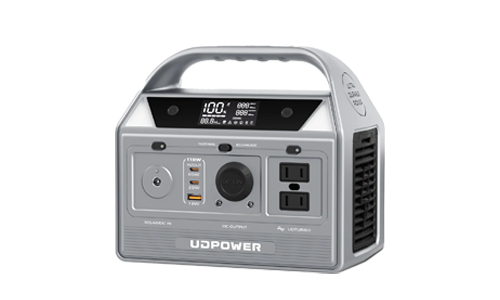
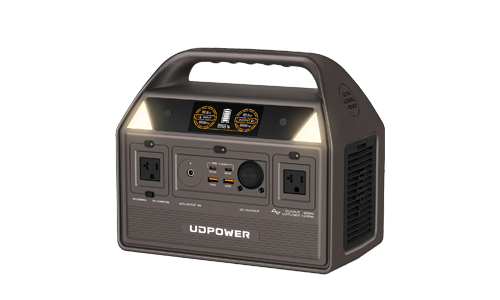
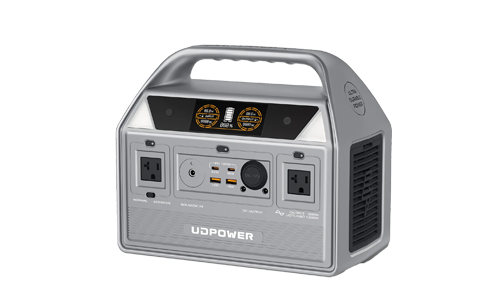


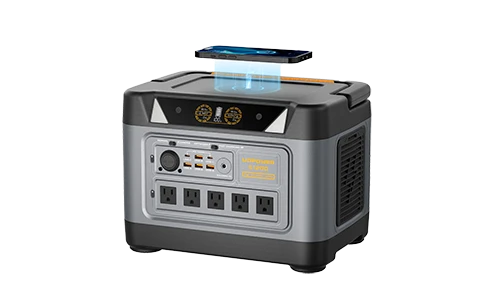
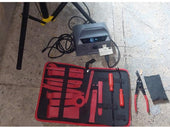

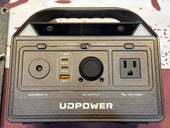
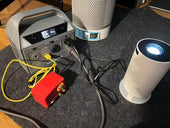
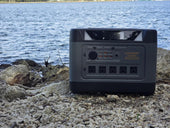
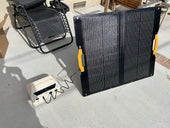

















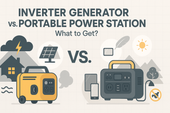
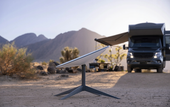



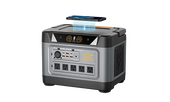







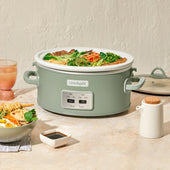






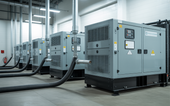
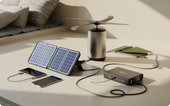
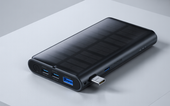


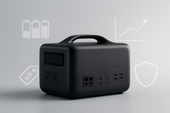







![How to Live In The Woods [Complete Guide]](http://udpwr.com/cdn/shop/articles/Off-Grid_Cabin_Option_f6c94fe7-1ae7-4c3a-baf5-ed9fe684c832.png?v=1763523215&width=170)




